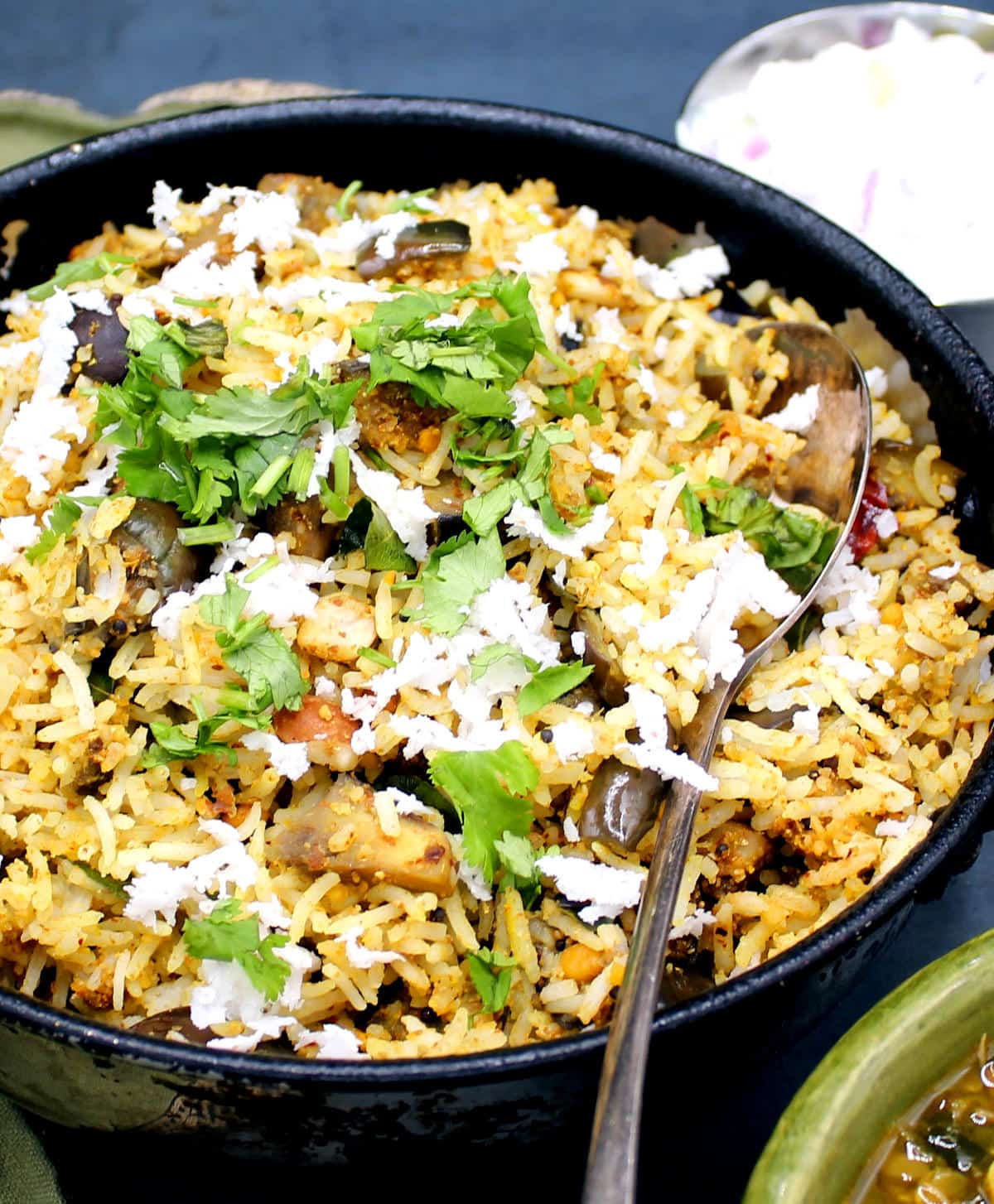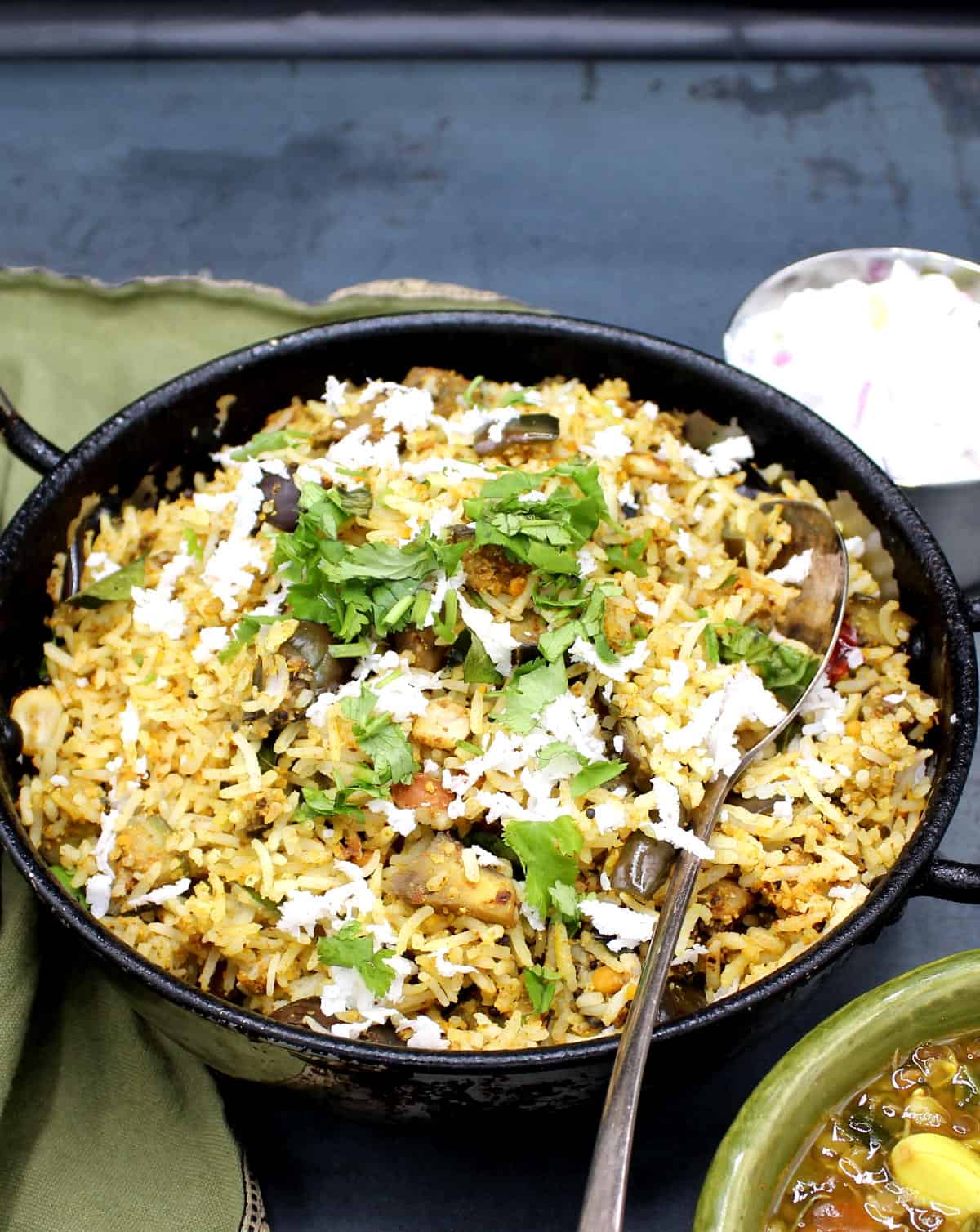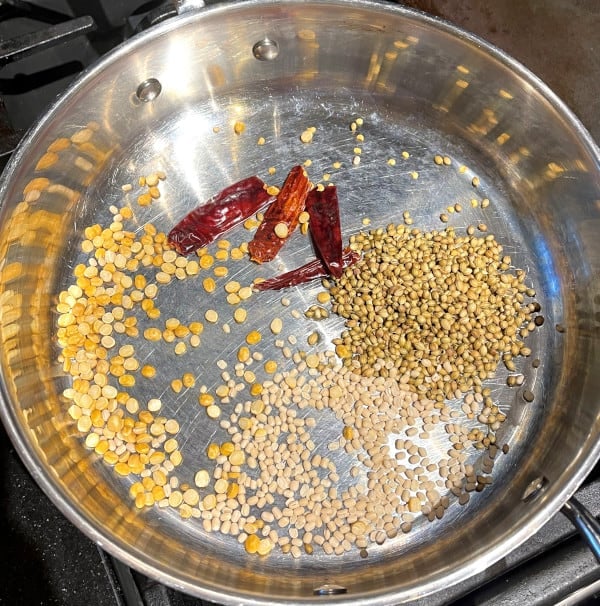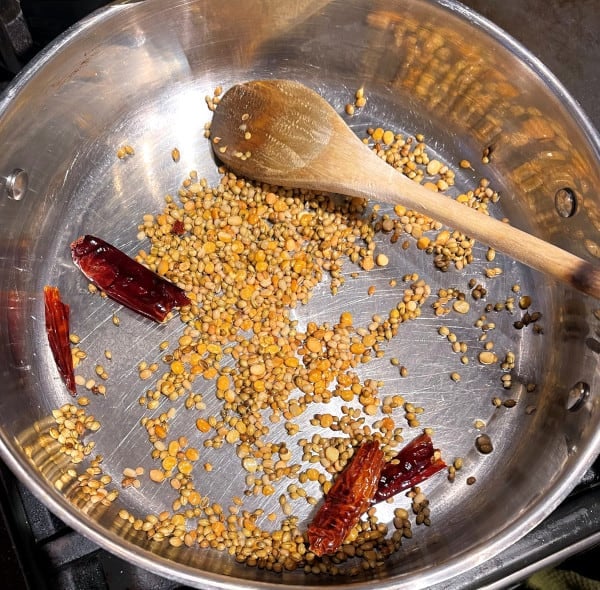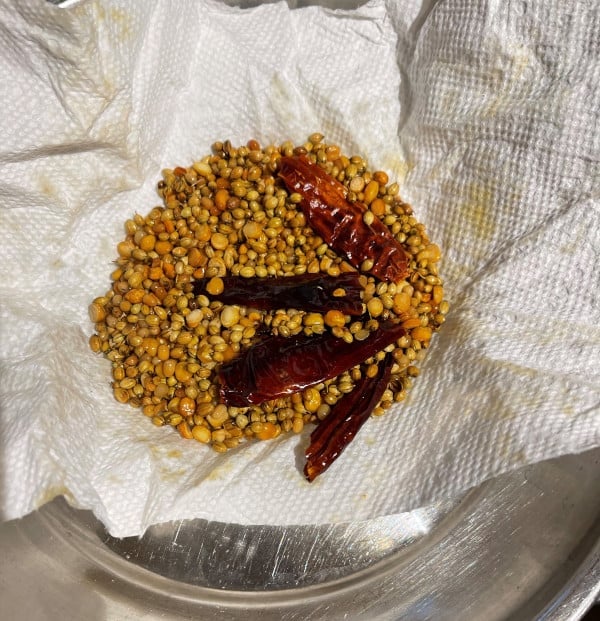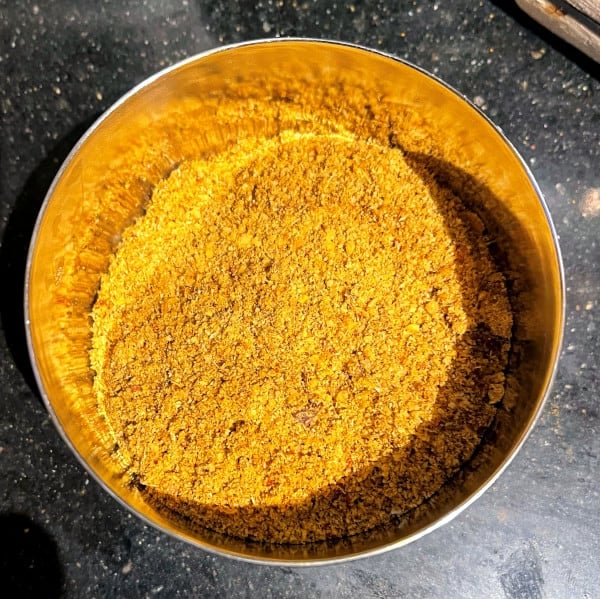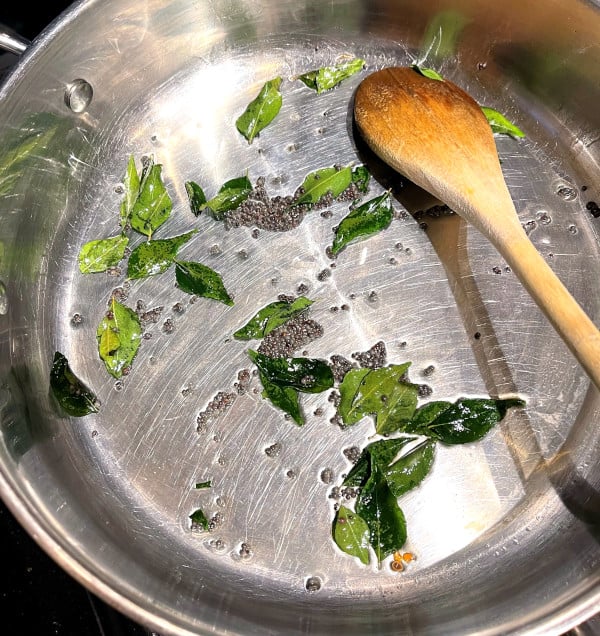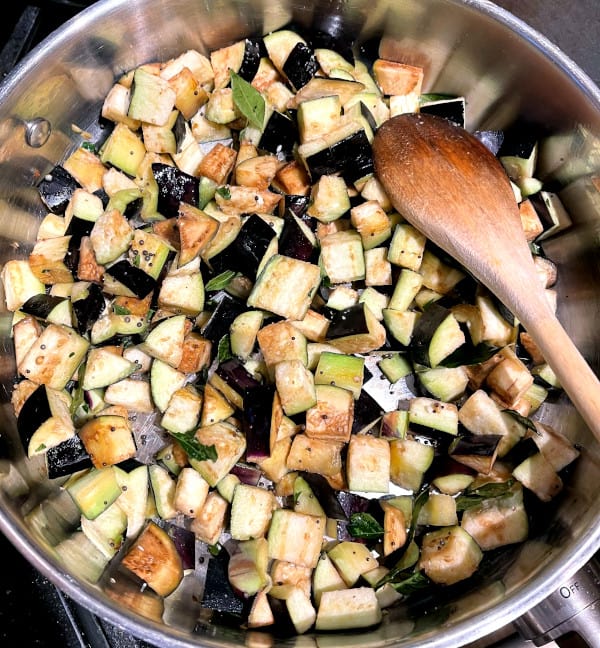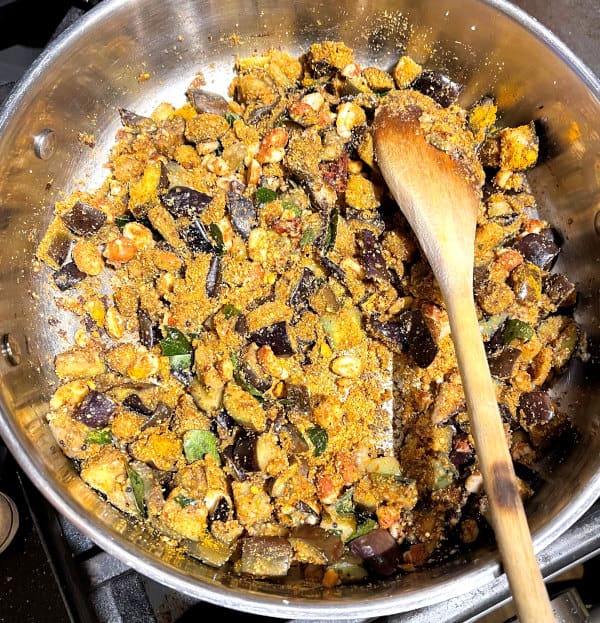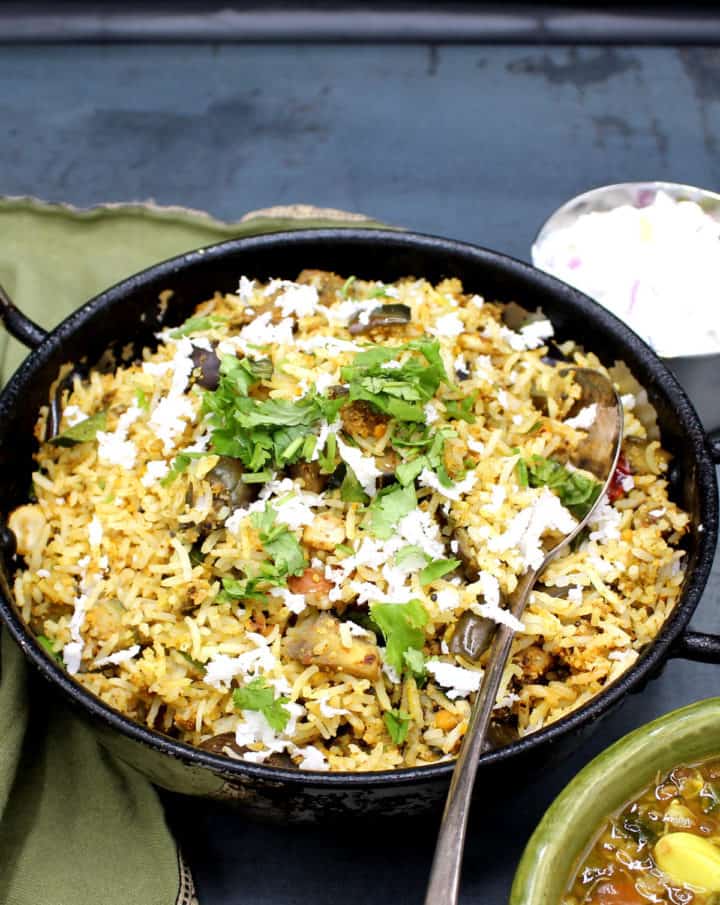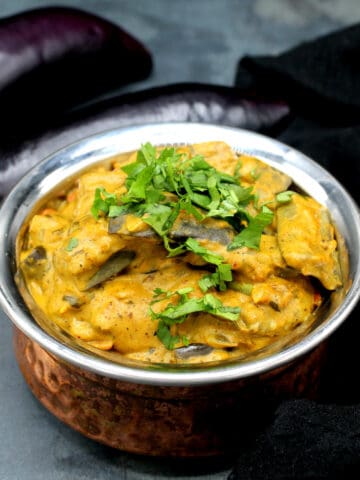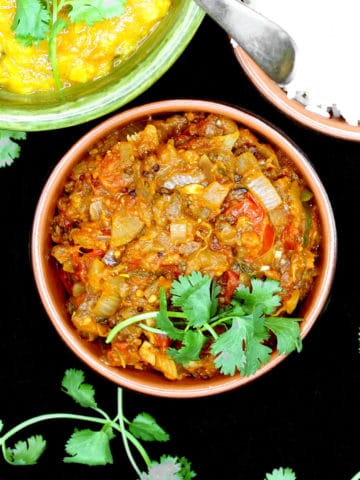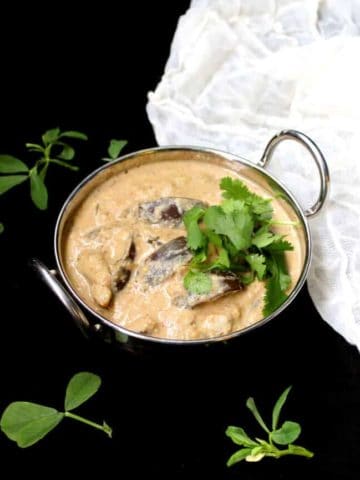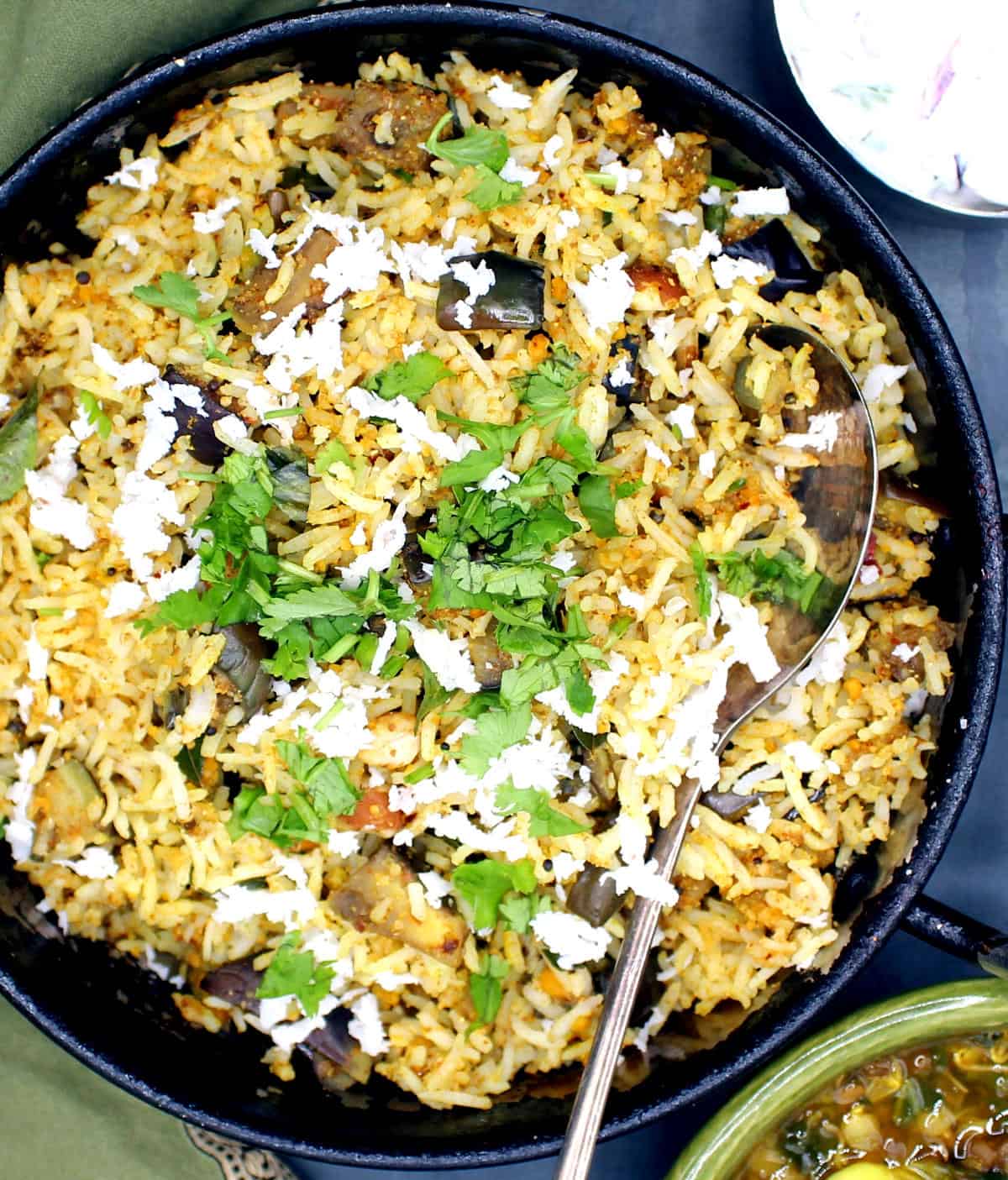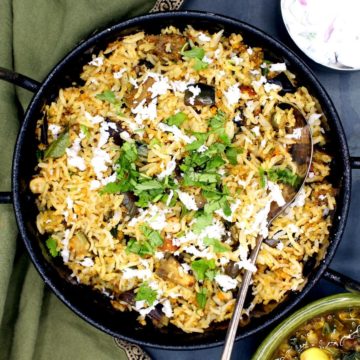Eggplant and rice are a delicious combination, something you already know if you’d made an eggplant biryani. A south Indian eggplant rice called Vangi Bath is another favorite, especially in the summer, when eggplants are at their seasonal best. Eggplants (brinjals, aubergines) are a soothing vegetable, with their creamy, comforting flavor. They are especially delicious when paired with rice and spices; sponge-like, they soak up the spices and then melt into the rice. Eggplant rice is one of many “prepared rice” or “mixed rice” dishes made in the south Indian state of Tamil Nadu. Others include coconut rice, lemon rice, turmeric rice and curd rice. These are quick meals, meant either for “tiffin” or snacking, or for light meals, and they often also serve as picnic foods: foods you’d take with you on long trips or train rides when eating well is everything.
Why you’ll love Vangi Bath
It’s savory. A special spice mix with just a few ingredients infuses every grain of rice and the eggplant with delicious flavor. It’s nutritious. Eggplants are one of the healthiest veggies you can eat and with rice they make a wholesome, healthy meal you’ll feel good about eating and serving your family. It’s a one-dish recipe. Although not one pot, because you need a separate pot to cook the rice. The vangi bath by itself is a complete meal, with the rice and veggies all in one dish. It takes under 30 minutes to make. This dish comes together really quickly, making it a great recipe for the weeknight or weekends.
How to make Vangi Bath
Begin by chopping the eggplant into small cubes (to ensure they cook quickly and evenly) and by cooking the rice using your preferred method. I cook the rice in the microwave, but you can use the stovetop method of boiling it until done in a large pot of water, like pasta, or use a rice cooker or Instant Pot. You can also use frozen cooked rice, which is now easily available. While the rice is cooking, roast the blended spice mix ingredients–coriander seeds, chana dal, urad dal and red chili peppers–in a skillet with a little oil. When they turn a few shades darker and very fragrant, remove them to a plate lined with a paper napkin. Press the napkin over the roasted ingredients to absorb any excess oil and once they cool blend them into a powder in a spice grinder or blender. Set aside. In the same skillet, add the remaining coconut oil and let it heat before adding mustard seeds. Once the mustard begins to sputter add the curry leaves and saute them for a couple of minutes until they begin to dry up and look crisp. Check to get new recipe updates by email.
Add the chopped eggplant and mix well. Add a teaspoon of salt, mix, cover, and let the eggplants cook over medium-low heat for about 10 minutes or until they are tender and cooked through. Stir several times in between to ensure the vegetables are not sticking to the bottom. Once the eggplant is tender, turn the heat to low and stir in the peanuts (leave out the peanuts if nut-free). Saute them for a couple of minutes. Then add the rice and the blended masala spice mix. Mix the rice and spices and veggies well. Use a light touch so you don’t mash the rice. Check for salt and add more if needed. Stir in the coconut, if using, and cilantro.
Make ahead and storage tips
You can make the vangi bath powder or spice mix ahead of time and store it in the refrigerator in an air-tight container for a couple of weeks. The cooked vangi bath can be refrigerated for up to three days and frozen for longer storage. Freeze in an air-tight, freezer-safe container. Thaw and reheat before eating.
Serving suggestions
With poppadum or south Indian fried crackers called vatrals or vadams. With vegan cucumber raita. With an Indian pickle, like this homemade lime pickle or carrot pickle.
More delicious Indian eggplant recipes
Recipe card

